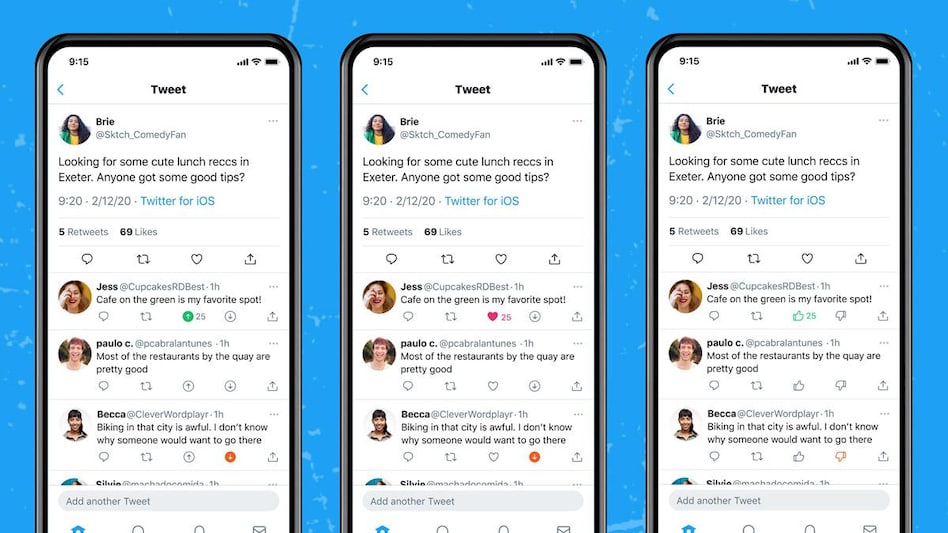 Downvotes are not visible to the public
Downvotes are not visible to the public  Downvotes are not visible to the public
Downvotes are not visible to the public Twitter has started testing the option to let users downvote replies to a tweet and expanded the feature to become accessible to more people globally last week. The downvote replies feature was accessible by some iOS users last year for testing and it is now available to more people.
The platform has explained that the downvote replies feature will help Twitter understand what sort of replies users find relevant in a conversation versus those they consider clutter and spam. Now, downvotes are not visible to the public on Twitter, unlike how things are on Reddit where users can see how many people have liked or disliked a comment.
Your downvotes are also only visible only to you and other users on Twitter will not be able to see what replies/tweets you have downvoted. Twitter added that the feature is a test for research only and the votes will not change the replies or the order of the replies.
Thanks to Twitter rolling out the feature to more people, the platform’s users on the web will now start seeing the option to downvote a reply in a conversation. The feature is also going to be rolled out to Android and iOS users globally, as Twitter mentioned in its post.
Twitter had introduced the downvote feature in July last year as an experimental feature to “work on ways to show more relevant replies in a conversation”. The platform explained that the results from its initial tests has helped it understand that a majority of its users downvoted a reply because either the reply is offensive or not relevant, or both. Twitter also added that downvoting was the most frequently used option for people to flag content they did not want to see.
“People who have tested downvoting agree it improves the quality of conversations on Twitter. We're excited to see how others think of it as it becomes available to more of you,” Twitter said.
It is possible that post this testing, Twitter might make the downvote option a permanent feature to improve its algorithms and make the platform better for users. However, it is also possible that this feature might be misused by people to downvote and mute replies they do not agree with on principle or based on their political inclinations, which would prove to be problematic.
YouTube, for instance, started hiding the number of dislikes on a video to protect content creators from targeted attacks on the site. Facebook/Meta also had considered adding a ‘Dislike’ button on the site but is yet to roll it out in any form, the platform instead brought in reactions for users to express views with emojis instead.
Also Read: Kishore Biyani, Mohandas Pai bet on ex-Twitter India head’s startup
Also Read: Twitter is working on a new feature to allow long-form posts
For Unparalleled coverage of India's Businesses and Economy – Subscribe to Business Today Magazine
Copyright©2025 Living Media India Limited. For reprint rights: Syndications Today